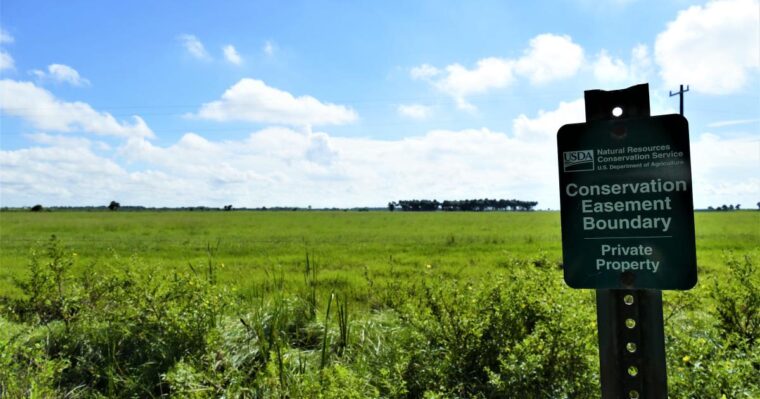
The U.S. Department of Agriculture (USDA) has announced an intent to allocate up to $50 million in fiscal year 2024 through the Wetland Reserve Enhancement Partnership (WREP) for projects aimed at protecting, restoring and improving critical wetlands on agricultural lands, as well as minimizing impacts from climate change.
Funded by the 2018 Farm Bill and the Inflation Reduction Act, WREP enables eligible conservation partners to collaborate with local agricultural producers to safeguard and improve high-priority wetlands on farmland. The program is part of the Agricultural Conservation Easement Program (ACEP).
The USDA’s Natural Resources Conservation Service (NRCS) is accepting proposals through Aug. 16, with priority given to proposals that target producers who conserve wetlands in disadvantaged communities or benefit them, supporting efforts to promote equity and environmental justice in its conservation programs.
“Our goal is to leverage the Inflation Reduction Act’s additional funding to help mitigate climate change through our conservation programs while protecting and improving critical natural resources like wetlands and wildlife habitat,” NRCS Chief Terry Cosby said. “The Wetland Reserve Enhancement Program takes a collective focus amongst partners and producers, with persistent engagement in conservation activities that helps grow the healthy functions and values of wetland ecosystems on working lands.”
WREP projects support the America the Beautiful Freshwater Challenge, an initiative announced in April to conserve, restore and reconnect freshwater resources nationwide, including 8 million acres of wetlands and 100,000 miles of rivers and streams, by 2030.
Through WREP, states, local governments, nongovernmental organizations and tribes collaborate with NRCS via cooperative and partnership agreements. Partners work with tribal and private landowners who voluntarily enroll eligible land into easements to protect and restore wetlands on their properties, including marginal croplands that are less productive due to repeated flooding or standing water.
Wetland easements protect wildlife habitats and serve as “carbon sinks,” offering buffers against floodwaters and enhancing the resilience of agricultural lands. Restoring wetland ecosystems helps filter sediments and chemicals, improving downstream water quality, enhancing wildlife and aquatic habitats, mitigating flood impacts, recharging groundwater and providing recreational benefits.
To enroll land through wetland reserve easements, NRCS enters into purchase agreements with eligible private landowners or tribes, granting NRCS the right to develop and implement a Wetland Reserve Plan of Operations. This plan outlines practices to restore, protect, and enhance wetland functions and values. Wetland Reserve enrollment options include:
Permanent Easements that last in perpetuity. NRCS covers 100% of the easement value and pays 75% to 100% of restoration costs.
30-year Easements that expire after 30 years. NRCS pays 50% to 75% of the easement value and covers 50% to 75% of the restoration costs.
Term Easements that last for the maximum duration allowed under state laws. NRCS pays 50% to 75% of the easement value and 50% to 75% of the restoration costs.
30-year Contracts that are available only for acreage owned by tribes; payment rates are similar to 30-year easements.
For all Wetland Reserve Easement options, NRCS covers all costs related to recording the easement, including recording fees, charges for abstracts, survey and appraisal fees and title insurance.
Since the 2018 Farm Bill, NRCS has invested approximately $104 million in WREP projects.
Photo courtesy of the USDA
The post USDA to fund new wetlands conservation easements appeared first on Government Market News.
